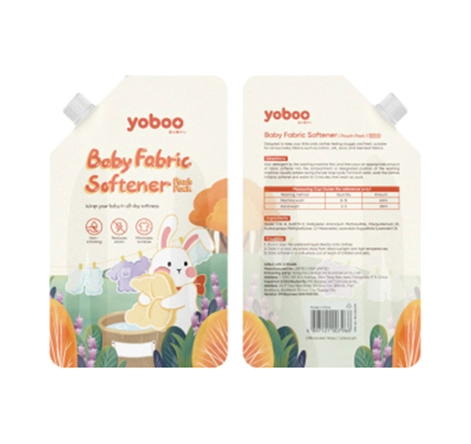Pay attention to the ingredients of infant hand wipes
The ingredients determine the quality of infant hand wipes. In order to achieve the desired effects of moisturizing, nourishing, and sterilizing, different brands of wipes have different added ingredients. Some inferior brands of infant hand wipes can harm babies, so parents should pay attention to the added ingredients on the product label when choosing. If the label is ambiguous or the ingredients are not suitable, do not buy. In addition, you can also pay attention to some baby wipe reviews and user reviews to get information about infant hand wipes.
Pay attention to the sealing of infant hand wipes
When buying infant hand wipes, you should also look at the packaging sealing of the product. The packaging of bagged wipes should be sealed and not damaged; the packaging of boxed and canned wipes should also be intact and not damaged. Once the sealing is poor or the packaging is damaged, bacteria will penetrate the wipes, and the effectiveness of the wipes' sterilization and disinfection will be reduced. In addition, after using wipes, immediately seal the seal to avoid high temperature or direct sunlight, which can cause the wipes to dry out and affect the effectiveness of use.
Pay attention to the texture and smell of infant hand wipes
Different brands of infant hand wipes have great differences in texture and smell. Some wipes are dense, some are soft, some have a fragrant smell, and some have almost no odor. It is recommended that mothers choose soft and thick infant hand wipes that are not easily torn or leave crumbs, and choose unscented infant hand wipes because these wipes have fewer added ingredients and are less irritating to babies.
The thickness of infant hand wipes
The thickness of the wipes is one of the standards for judging the quality of the wipes. Generally, thicker wipes have better texture and practicality, while thinner wipes are easier to tear during use, affecting their cleaning ability. For the thickness test of wipes, we judge by observing with the naked eye and feeling by hand.
Quality of infant hand wipes
The product quality refers not only to the net weight of a single wipe, but also includes the weight of the wipe paper, water content, and weight of additives. You can weigh the freshly taken infant hand wipes to see the weight of a single wipe, and then weigh them after drying to get the data on the water content of the wipes. Since different wipes have different specifications, this data can only roughly indicate the richness of the content of the wipes, and the measurement method is relatively rough and can only be used as a reference.
Wear resistance of infant hand wipes
infant hand wipes need to be wear-resistant in order to play a good cleaning role and reduce irritation to the baby's skin. You can use the following test method: use wipes to wipe a surface for 70 times and compare the degree of fuzziness on the surface of the wipes. If the used wipes do not have obvious fuzziness on the surface, then the quality is generally considered to be good.
Moisturizing effect of infant hand wipes
Poor moisturizing effect refers to the water content of the infant hand wipes. Good infant hand wipes can leave a protective film on the skin after wiping, protecting the baby's delicate skin. The test method is to first measure the moisture level of the skin on the back of the hand when it is dry, use wipes to wipe the back of the hand, and then measure the moisture level after 5 minutes and 30 minutes. If the back of the hand is still moist after 30 minutes, then this brand of infant hand wipes has a better moisturizing effect.













